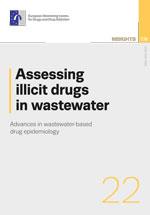Assessing illicit drugs in wastewater: advances in wastewater-based drug epidemiology
Introduction
Assessing illicit drugs in wastewater: advances in wastewater-based drug epidemiology reviews a new approach to estimating drug use in populations, based on the detection and quantification of drugs and their metabolic products in community wastewater. Strengths of the wastewater-based approach include avoiding the problems associated with questionnaire-based research, better identification of the drugs being used and being able to provide near-real-time results, with the power to identify trends in drug use patterns, over time and geographically. Novel uses of the approach are explored, such as the early detection of new psychoactive substances on the drug market. The report also looks at the limitations to the approach and how these can be overcome for this new tool to take its place in the drug epidemiologist’s toolkit.
Download as PDF
Table of contents
- Foreword
- Executive summary
- Acknowledgements
- Introduction
- Chapter 1: Estimating community drug use through wastewater-based epidemiology
- Chapter 2: Target drug residues in wastewater
- Chapter 3: A global overview of wastewater-based epidemiology
- Chapter 4: New psychoactive substances: analysis and site-specific testing
- Chapter 5: Integrating wastewater analysis with conventional approaches for measuring illicit drug use
- Chapter 6: Conclusions and final remarks









